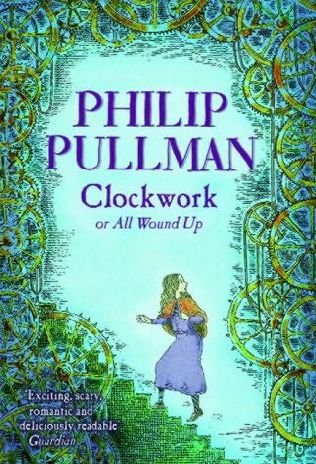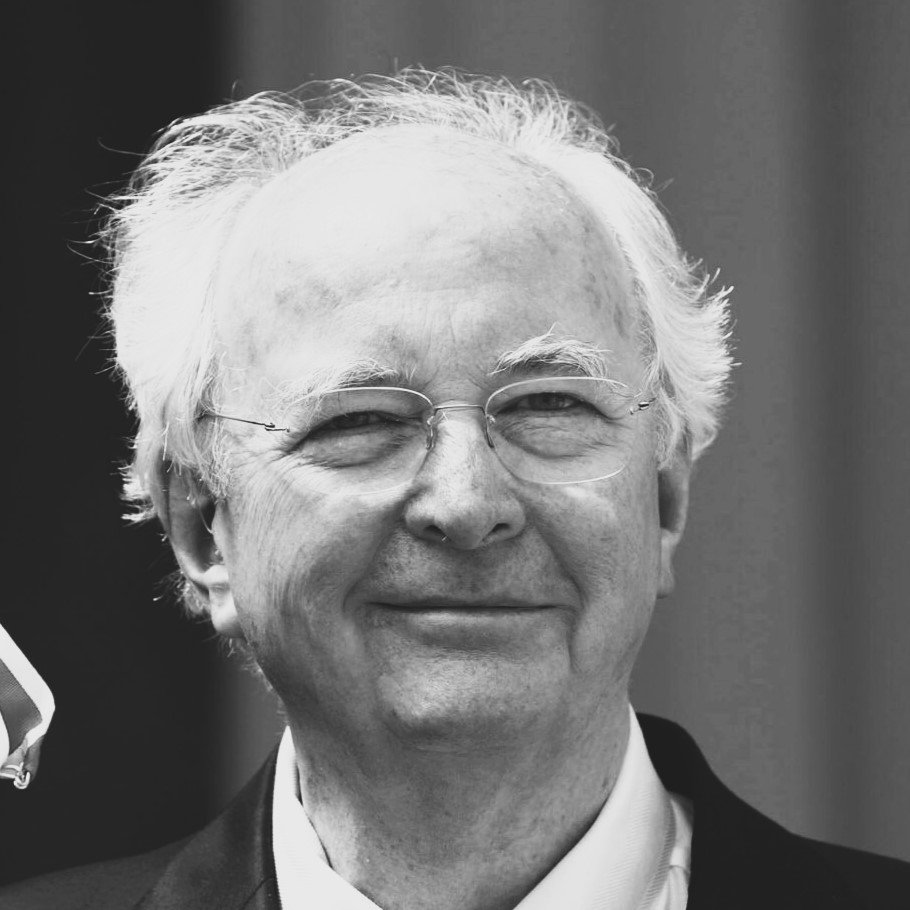Philip Pullman’s novella Clockwork, which won a Children’s Choice Award in 1999, is one of four fairytales in the collection Four Tales. This particular story illustrates how situations in life often work together as intricately as the machinery within a time piece, with circumstances driving one another much like the cogs and wheels of a clock. The story is written in the deceptively simplistic language of a fairytale, but as the tale of the village storyteller Fritz, the ambition of the clockmaker’s apprentice Karl, and the kindness of the barmaid Gretl all become linked to the fate of the innocent Prince Florian, readers will come to appreciate the complexity and horror of Pullman’s narrative.
Reviewer Barrie Trinkle writes that Pullman’s “story begins, as all good fairytales do, with someone whose human weakness sets events inescapably in motion.” Pullman uses the symbol of the town clock to emphasize the inevitable forward march of both time and tale, while also drawing attention to the complexity of the multiple players in his story:
The great clock of Glockenheim was the most amazing piece of machinery in the whole of Germany. If you wanted to see all the figures you would have to watch it for a whole year, because the mechanism was so complex that it took twelve months to complete its movement. There were all the Saints, each coming out on their own day; there was Death, with his scythe and hourglass; there were over a hundred figures altogether.
From amongst the many players in the story, there are two morally weak characters who set events in motion – the clockmaker’s apprentice Karl and the town storyteller Fritz, both of whom have failed at their task to produce some form of entertainment for the townspeople. All of the clockmaker’s apprentices are expected to produce a new figure for the great clock of Glockenheim, while the much-admired storyteller Fritz is expected to produce many more rousing, chilling ghost tales to satisfy the townspeople’s need for thrills on a cold winter’s night. Unfortunately, neither of the young men have managed to create a satisfying product. But although Pullman begins his tale by describing these two, as events unfold, it becomes clear that someone else has set this set of great and complex gears in motion.
While reading his incomplete story to a captivated audience at the White Horse Tavern, Fritz is interrupted by the very villain within his own tale – a horrifying tale of the Prince Otto, who has had his heart cut out and replaced by a piece of clockwork that forced his arm to continue to drive the horses and cart all the way back home to his palace, even though he was dead. (After finishing Clockwork, a story with several creepy elements, my husband and I agreed that this was the most horrifying aspect of the whole tale: a dead man who continues to run by clockwork.)
Like within the gears of a clock, there are several interlocking stories within the novella – the gruesome mystery of Prince Otto’s death and the fate of his son Prince Florian; the tale of the powerful storyteller Fritz, who it seems might be able to conjure up characters from his pages and into real life; and that of the clockmaker’s failed and desperate apprentice Karl, whom Fritz’s villain arrives in the flesh to tempt with a devilish offer.
It is Gretl, though, who ties all the elements of these stories together and brings about the end of the tale – she is the heroine of the piece. I am falling in love with Pullman’s consistent choice to portray young girls as a strong and important force against greedy, corrupt men. Pullman’s His Dark Materials focuses on the brazen Lyra, and while Gretl is quite mild and gentle compared to the heroine of that trilogy, she is still central to the happy ending of the tale Clockwork. Though her actions may seem simple, they involve a great deal of bravery – in the end, it is she who climbs the great clock tower and explores the creepy machinations of the Glockenheim clock (at night, no less) in order to save the Prince Florian. While all the men in this story give in to their fear, Gretl boldly does what must be done in order to set things right.
Overall, Clockwork is told with the familiar tone of fairytale narratives paired with many new twists and elements that are both truly haunting and gruesome. My husband and I both found this interesting blend of the familiar, the unexpected, and the horrifying to be very engrossing and thought-provoking as we read this novella together in one sitting. I also have a sense that I have not even picked up on all of the many layers and themes that resonate through this story; as I observed earlier, the language in Clockwork can have the effect of making the tale seem deceptively simple. Underneath the “once upon a time” prose, however, is an intricate set of parts that all work together to propel the reader forward through the tale. The sometimes-grisly story eventually reveals how Prince Otto ended up with a piece of clockwork sewn into his chest – but still leaves you guessing how the characters from Fritz’s tale might have had the power to come to life in the first place. Pullman’s ability to balance the story on the edge of a knife while juggling these mysterious elements will keep readers engrossed through all 80 pages.



This website was created with a lot of love, Coke Zero, and tacos by Kumquat Creative.